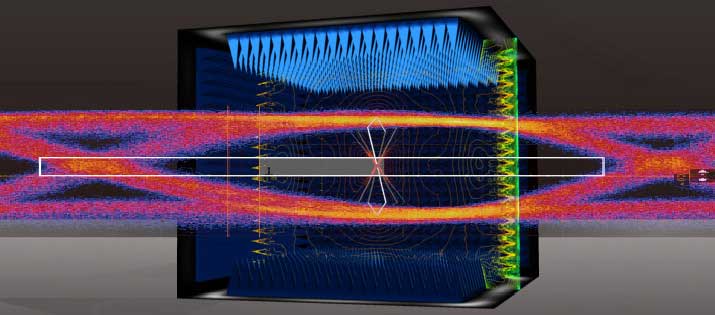IDENTIFICATION FOR CRYSTALLINE SUBSTANCE IN SAMPLE

Identification principle of crystalline substances
Matters are divided into two categories: crystalline and amorphous, which arranging the composed atoms regularly or irregularly, respectively. The composed atoms of amorphous maters allocate randomly, but the one of crystalline substances place in order performing highly periodic arrangement in all directions. Due to that the composed atoms in crystalline structure arrange regularly to form the atomic or lattice planes, it demonstrates the constructive X-ray by incident the mono-wavelength X-ray to the sample (It uses CuKa – X ray in the measurement.) following the Bragg’s law. X-ray diffraction spectrum mainly shows two important information: diffraction angle (2θ) and diffraction intensity (I). First one provides the lattice phase and size (lattice parameters), and the other demonstrates the composed atom type and position. This two information varies for different lattice structure and composites. Because every crystal performs unique results, it could identify what kind of crystal and lattice by XRD, just like human fingerprints. Different crystal performs different lattice information of(2θ)which is called diffraction patterns. Every matter is composed of specific lattice and elements. Therefore, it could compare the result of WDXRF element analysis and XRD diffraction spectrum with the crystal database of ICDD-PDF (International Center for Diffraction Data (ICDD); PDF: Powder Diffraction File (PDF)) to identify the existing crystalline composites in sample.
Instruments
- XRD (X-ray Diffraction)
- WDXRF (Wavelength Dispersive X-Ray Fluorescence Spectroscopy)
- SEM/EDX (Scanning Electron Microscope/Energy Dispersive X-ray Spectrometer)
(SEM/EDX is not essential instrument to identify crystalline substances. It depends on testing requirement and sample condition.)
Analysis Information
- Testing Services: Identify the crystalline substance in sample by XRD, WDXRF and ICCD.
- Sample States: Solid samples (including crystalline substances)。
- Detection Limitation: Qualitative analysis



























